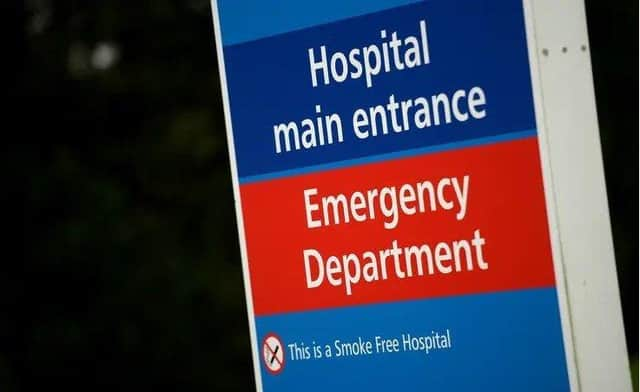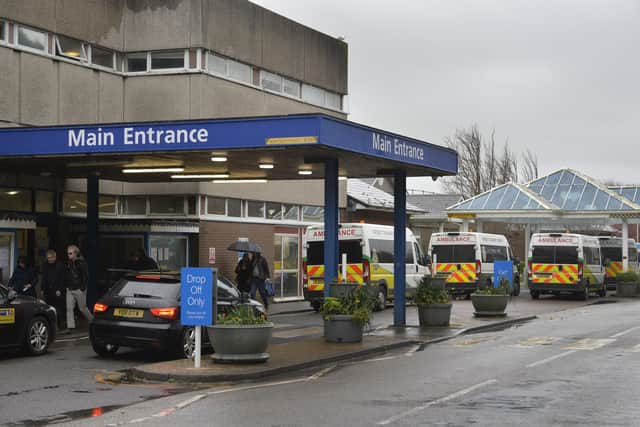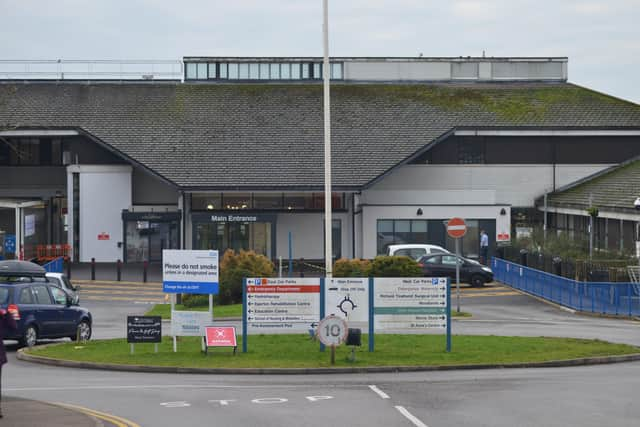Non-urgent A&E visits cost East Sussex Healthcare more than £1 million last year


Patients attending A&E with no obvious medical condition cost East Sussex Healthcare NHS Trust more than £1 million last year, figures reveal.
The Royal College of Emergency Medicine said many people anxious about their health have ‘no alternative’ but to turn to A&E for treatment, and added that pressures on emergency departments should not fall on the public.
Advertisement
Hide AdAdvertisement
Hide AdNHS Digital data shows roughly 8,140 admissions had a primary diagnosis of ‘nothing abnormal detected’ at East Sussex Healthcare NHS Trust in 2019-20.


These attendances cost the trust around £1.1 million over the period and accounted for six per cent of all emergency activity.
The NHS says A&E is for serious and life-threatening emergencies, with patients urged to call 111 over other urgent illnesses.
But Dr Adrian Boyle, vice president of the RCEM, warned there are ‘many reasons’ why someone could attend an emergency department and then be discharged with no serious diagnosis made.
Advertisement
Hide AdAdvertisement
Hide Ad“They may attend because there is simply no alternative, or they are directed there by an external agency,” he said.


“If patients are unsure about attending A&E or if they have a non-life-threatening condition then they should call NHS 111 where they will be directed to the best care for their particular condition.
“But crucially patients won’t know the severity of their condition without clinical expertise or examination. Sometimes cases do show no abnormality and at those times we will discharge the patients appropriately.
“However, there are times when we do discover something serious and their attendance may save their life as we are able to swiftly provide appropriate treatment.”
Advertisement
Hide AdAdvertisement
Hide AdHe said concern over pressures on A&E departments should not be shouldered by the public, adding that an ‘adequately staffed and funded’ health service can meet patient and community demand.
Across all trusts in England which provided figures, £178 million was spent on 1.1 million non-urgent A&E attendances in 2019-20.
Sarah Scobie, deputy director of research at the Nuffield Trust health think tank, said despite A&E attendances dropping ‘significantly’ during the pandemic, those with a listed diagnosis of ‘nothing abnormal’ did not fall any further than other admission types.
She said, “This suggests that they could not be helped elsewhere in the system or still felt that A&E was the most appropriate service for them.”
Advertisement
Hide AdAdvertisement
Hide AdMs Scobie added that the NHS has made several attempts to divert patients with less serious conditions, including encouraging patients to use the 111 service.
“This process may reduce pressure on ‘front door’ services but is unlikely to reduce admissions to hospitals from those with an urgent need for care,” she said.
At East Sussex Healthcare, lacerations (deep wounds to the skin) were the most common issues in 2019-20 – for which a diagnosis was listed – accounting for 9,290 emergency episodes.
Comment Guidelines
National World encourages reader discussion on our stories. User feedback, insights and back-and-forth exchanges add a rich layer of context to reporting. Please review our Community Guidelines before commenting.